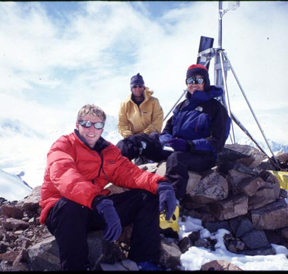Principal Investigators: Paul A. Mayewski, Karl Kreutz and Gregory Zielinski


During the 2001 and 2002 field seasons, a new ice core to bedrock (190 m) was recovered from the Prospector-Russel Col (5345 masl) area of Mt. Logan by the Geological Survey of Canada. Based on known accumulation rates and preliminary ice flow modeling, the new ice core record likely spans the entire Holocene and possibly a portion of the late Glacial. The University of Maine will develop and interpret detailed time series (8-10+ samples/year over the last 1000-2000 years and multi-annual to decadal through the Holocene and perhaps late Glacial) for: major ions, stable isotopes, trace elements, and tephra from the new Mt. Logan ice core utilizing state-of-the-art technology.
View the Expedition page for 2005.
